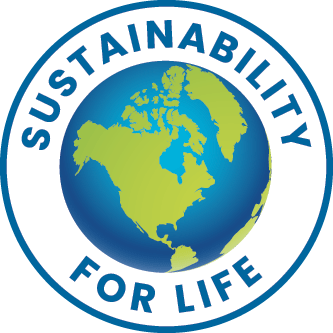Fight Wildfires Sustainably

Fight Wildfires Sustainably
“There is an eco-friendly solution to the increasingly damaging wildfires in the U.S.”.
H. William Clark
sustainabilityforlife.com
Note: Communicating this information as news to others is free of charge.7
Follow this link for a printable .PDF version of this information
Introduction
- From many sources, it is clear Global Warming is increasing destructive wildfires, especially in the western U.S. (1) (2)
- It is estimated 776,000 homes in the western U.S., worth approximately $221 billon are at extreme risk of wildfire damage. (3) (4)
- In a recent year, U.S. wildfire damage totaled $24 billion. (5)
- Fire retardants are coming under increased scrutiny as being harmful to the environment. (6)
- The impact on families (physical, emotional, and financial) must be considered.
- This presentation takes a fresh look at the problem, and offers an eco-friendly solution.

An Objective Basis for an Expanded Solution

- Examining the situation objectively, from an engineering project management viewpoint, yields the following:
- Across the next 10 years, assume the annual losses from western wildfires is $18B, which is conservative.
- Assume these losses are occurring with largely ground-based response, with some aerial water drops.
- Assume the goal is to reduce those losses by 70%, a $12.6B annual reduction
- Assume a pay-back for investment of 7 years, which is a very valuable project.
- This gives a maximum project cost of $88 billion.
- Including potential operating costs of a solution , assume $80 billion is the desired project maximum cost.
- A key: the project and it’s operation must minimize harm to the environment.
Expanded solution: the C-130 aircraft, biofuel, and water

- C-130 aircraft are already used to drop water on fires around the world (7).
- Other types of aircraft that can carry at least 3,000 gallons of water can also work.
- There have been some crashes, and some concerns (important and valid) expressed by some people. (7)
- However, the reality is that ground fire-fighting often does not stop a fire in the first few days, resulting in a much larger, destructive fire (billions in losses).
- The expanded solution is to have fleets of 25+ C-130 planes strategically placed at air bases around California and the western U.S., ready to go quickly.
- The appropriate wildfire air defense strategy should be three-fold:
- During periods of drought, the C-130 planes could drop water on dry areas near homes and residential areas (prevention)
- In the first hours of a reported fire, to buy time for ground crews to move into position, 25+ planes could drop massive amounts of water on the blaze.
- Also, once the ground crews are close enough to provide leadership, it is they who should direct the location of water drops. Example: sending information about adjustments to the targeting of water drops.
- Aerial water drops are a important supplement to fire-fighting in the first 1-3 days.
- Establish 8 air bases spread out across the western U.S.. (use of existing airbases is a possibility), each with 25 C-130 aircraft operating on bio-fuel, with water as the cargo. 200+ aircraft total.
- The 8 locations could be strategically placed within 500 miles of areas known to have wildfires, preferably within 300 miles.
- Each C-130 would have a water tank(s) installed in the cargo hold, capable of holding a large quantity water, which could be dropped on any wildfire. (these types of planes are already in use)
- Each airbase would have water and biofuel reserves for filling the planes.
- When any wildfire begins, there is a critical time in the first few days when a quick response could stop the fire.
- This system could respond within hours.
Why this Expanded solution can work

- Up to this point, there may not have been enough emphasis on:
- the size of a project that can be justified with $18+ billion per year in fire damage losses. Aerial water drop capability can be massive.
- modifications to the C-130 to improve maneuverability in windy situations and mountainous terrain.
- Pilot training and electronic devices to make accurate aerial water drops from higher elevations. This includes many practice runs in different conditions to safely deliver the water.
- Dropping water on fires from planes is a technical challenge, and can be improved with study and design improvement.
- Note: there are some conditions that make aerial water drops not feasible.
Description of the Lockheed C-130 Hercules Transport Plane (8)

- In use by the military since 1960, several configurations, range of specs.
- Power: Four Turboprops, 4,200 to 4,700 horsepower
- Range with Payload: 1,150 – 2,070 miles
- Speed with Payload: 345 – 417 mph at 20,000+ ft of elevation
- Maximum Normal Payload: 36,000 pounds. Capable of + 4,000 pounds more.
- Has already demonstrated the capability of flying with 50/50 biofuel mix. (9) (10)
Important Issues related to Fuel and Water

- To prevent harm to the environment, aircraft design must maximize the % biofuel used in the planes. This is important for sustainability decade after decade.
- In fact, all the airbases and all ground vehicles must operate on renewable power.
- The two above goals can be achieved.
- Water is the safest fire-fighting substance known to human-kind. It is not a harmful chemical, and it can run-off to the ground and not harm the environment.
This Project requires a special configuration of the C-130
- A modified design might look like:
- Four Turboprops, with 4700 Horsepower.
- Operates on 80-90+% biofuel. This protects the environment. Jets can already operate on 100% biofuel. (11)
- Maximum payload: 38,000 pounds or higher
- Bio-Fuel filling system allows filling of 6 aircraft in 8 minutes or less
- Large water tank(s) installed in cargo bay, probably aluminum (not plastic), capable of holding 4,000 gallons of water.
- Water filling system allows filling of 6 aircraft in 8 minutes or less. Water must contain minimal bacteria and contaminants.
- Piping system array under each aircraft can empty the water tank in less than 7-12 seconds. This would send a shower of water down on a fire.
- Improved targeting electronics (allowing for wind direction and speed) for dropping water from higher elevations.
- Improved aircraft design for windy conditions (see next page).

Special configuration of the C-130, windy conditions
- Wildfires spread rapidly in windy conditions.
- Planes must be able to drop water on wildfires in the first day and beyond, even in windy conditions.
- A re-designed turboprop plane for this service would include:
- Sensors at various outside locations on the plane to sense relative wind direction and speed (wind-gusts)
- Special flaps on wings and tail available for adjustment.
- Computer control of these special flaps to adjust for wind conditions, without the need for a pilot to decide or react.
- Override button available to pilot.
- This could greatly increase the operational effectiveness of the planes.
- Also, one day, these types of planes will be remotely-controlled and pilotless (large drones)

How it Might Look when Implemented
- One of the bases has been built and has 25 C-130 planes available.
- A percentage of the pilots and ground crews could operate like volunteer firemen, not full-time.
- A small forest fire starts 300 miles away, the alarm is sounded.
- The planes are filled within a few hours.
- 25 planes take off, each loaded with 4,000 gallons of water. In about 2 hours, 25 planes drop 100,000 gallons of water on the fire.
- The aircraft would need to fly lower than normal at the drop sight, but not too low to be impacted by the smoke.
- Water could be targeted near residential areas where homes and people are at risk.
- Returning to base empty, re-filling and returning twice more could place a total of 300,000 gallons on the fire in one day.
- Would this be enough to allow ground crews to control the fire and put it out ? In the early stages of a fire, there is a very high probability the answer is yes.
The Possibility for Cooperative Efforts

- Each airbase could be designed to handle 50 planes.
- For a particularly large and dangerous wildfire, 25 planes from another airbase 400 miles away, could either:
- deliver their extra water to the wildfire from their base, or..
- fly to the base nearest the fire and operate alongside the existing aircraft at that base.
- This would double the water delivery capability (600,000 gallons per day).
- This entire approach would greatly improve the safety of ground fire-fighters.
Who Might Support this Plan?

- An expanded aircraft water delivery system could be supported by:
- Fire-fighters
- Business owners
- Homeowners
- Home Developers
- Insurance companies
- This new approach has the potential to greatly lower insurance costs across the western United States.
- These air bases could pay for themselves in less than 8 years, a good return on investment.
- Of course, the first issue is how to pay for the first few bases. This could be a cooperative effort between all the people and organizations listed above.
- Could 8 bases be built for less than $10B each, and would operating expenses be moderate? This would be confirmed when one base is operating.
A Key Question

- If this expanded plan reduced losses from wildfires by about $12B per year, would insurance companies massively adjust insurance premiums downward?
- The history of the industry indicates premiums are based on the historical loss record, and premiums would eventually be lowered.
- This financial process is a huge negotiation area for all parties involved.
Summary of this Expanded Plan:

- Greatly increases the capability to deliver aerial water drops.
- Uses water, which will not harm the environment.
- Ensures 200+ aircraft are available, with improved aircraft capability and improved accuracy of water drops; with extra pilot training.
- Allows aircraft to be used regularly to drop water on dry areas that are at risk to potential fires (prevention)
- This expanded plan is worthy of being evaluated for possible implementation.
- This evaluation would take a cooperative effort between , private industry and insurance companies.
- Finally, let’s remember and honor those brave firefighters who die each year, while fighting these destructive blazes.
- The stakes are very high, and the potential for a positive result is high.
Citations
- Fox News, Aug. 19, 2018, Science Says: Hotter weather turbocharges US West wildfires
- U.S. News, Aug. 1, 2018, Wildfires Are Getting Worse, And More Costly, Every Year
- World Property Journal, Sept. 13, 2019, Over 776,000 Western U.S. Homes at Extreme Risk of Wildfire Damage in 2019
- Insurance Journal, Sept. 12, 2019, Report: $221B in Western U.S. Homes at Extreme Risk of Wildfire Damage
- Center for Climate and Energy Solutions, Feb. 27, 2018, Record wildfires push 2018 disaster costs to $91 B.
- The Reader, April 26, Fire Retardant Use Explodes as worries about Water, Wildlife Risk Grow.
- U.S. News, Factbox: January 23, 2020, C-130 Hercules Aircraft Used as Water Bombers to Fight Fires Around the World
- U.S. Airforce, June 20, 2018, C-130 Hercules Fact Sheet
- NPR, Houston Public Media, Sept. 22, 2011, Air Force And Navy Turn To Biofuels
- U.S. Air Force, Aug. 29, 2016, Fueling the future: AF works to ‘home-grow’ biofuels for DOD, industry
- AIN Online, April 4, 2019, Aerion Plans For 100 Percent Biofuel on AS2
H. William Clark, born in America, resides in Texas
